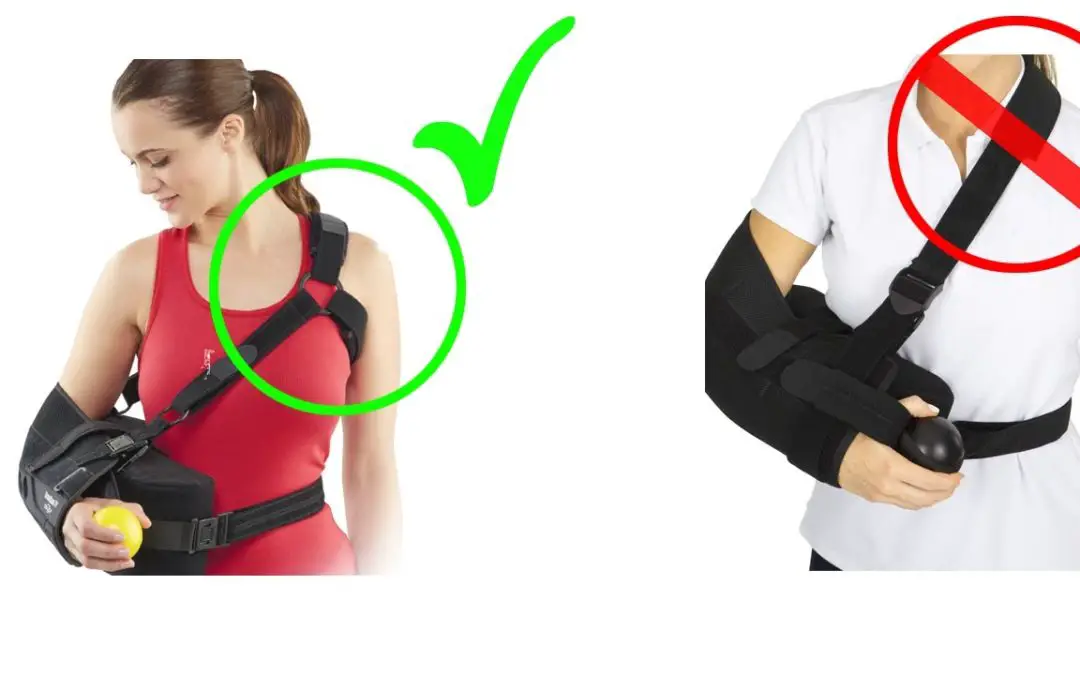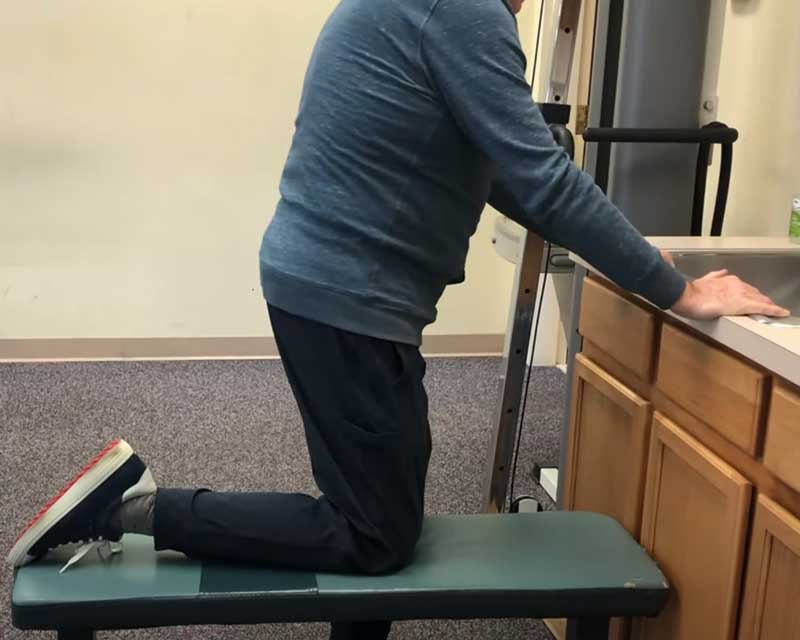Sleeping After Knee Replacement – 3 Best Positions
Finding a comfortable sleeping position after a knee replacement can be challenging. The most common advice is to sleep flat on your back with your surgical knee straight and elevated above your heart.
To achieve this, many surgeons recommend propping a pillow under your heel or using a straight wedge pillow under the surgical leg. But what about those of you who can’t sleep on your back due to other medical conditions?
What should you do?
1. Sleeping on your back
Why is sleeping on your back the most common recommendation?
Pros:
🟢 Sleeping on your back allows you to position your surgical knee in full extension.
🟢 It also enables you to elevate the surgical leg above the level of your heart to reduce swelling.
Cons:
🔴 Many individuals who have undergone a total knee replacement also suffer from low back pain associated with spinal stenosis and are unable to sleep flat on their back.
🔴 Neck pain is a common complaint for those who aren’t used to sleeping flat on their back.
Recommendations:
If your knee range of motion is improving along expected guidelines and you’re not experiencing significant swelling, consider sleeping in any position that is most comfortable for you.
2. Is it safe to sleep on my side after knee replacement?
Yes, side sleeping positions are safe and sometimes recommended after knee replacement surgery. If your knee range of motion is within the expected normal degrees based on the time since surgery, then you are encouraged to sleep in any position that provides you the best restorative sleep.
Two side sleeping positions:
- With your surgical knee down on the mattress. In this position, the bed contours to your leg. Try to keep your knee straight while sleeping on this side.
- With your surgical knee on top. In this position, you may use pillows to support the surgical leg and keep your knee above the level of your hip. This position makes it harder to keep the knee fully extended, but if your knee range of motion is within normal limits, your goal is simply to sleep well.
3. Is it safe to sleep on my stomach after knee replacement?
Yes, sleeping on your stomach, also known as prone, is both safe and an effective way to improve knee extension. The primary difference between sleeping on your stomach versus sleeping on your back with your leg propped is that the prone position will not reduce swelling. If you’ve always slept on your stomach or partially turned toward your stomach, you should be fine to return to that sleeping position.
Some patients may be concerned about the incision. If you experience significant sensitivity over the incision, there are strategies to reduce this sensitivity, but any danger in allowing the knee to rest incision down on the mattress.
Where do you put a pillow after knee surgery?
When sleeping in the supine (on your back) position, place one to three pillows under your surgical leg while attempting to keep your knee straight.
In the video below, you can see how to arrange pillows under the surgical leg to reduce swelling and position the knee comfortably:
You may also choose to use a wedge pillow if it is easier. You can find a great selection of wedge pillows on Amazon by clicking this link.
Frequently Asked Questions
-
How long should I keep my leg elevated after knee replacement surgery?
It is generally recommended to elevate your surgical leg above the level of your heart for the first few days after surgery, especially when you’re resting or sleeping. Gradually decrease the elevation as your swelling and pain decrease. It’s important to follow your surgeon’s and physical therapist’s recommendations for your specific case.
-
When can I start sleeping without a pillow under my surgical leg?
As your knee range of motion improves and the swelling decreases, you may start to feel more comfortable sleeping without a pillow under your leg. It’s essential to listen to your body and follow the guidance of your surgeon and physical therapist, who can provide personalized advice based on your recovery progress.
-
Can I use a recliner for sleeping after knee replacement surgery?
Using a recliner for sleeping after knee replacement surgery can be a good option for some individuals, as it allows for easy elevation and support of the surgical leg. However, it’s important to ensure that your knee is still in a comfortable, extended position while using a recliner. Consult with your surgeon or physical therapist for recommendations tailored to your specific situation.
About the Author -
Anthony Maritato, PT has been a licensed physical therapist since 2006. He specializes in post surgical care and rehabilitation of total knee replacement and rotator cuff repair surgery.
Mr. Maritato is also nationally recognized as a therapist educator teaching courses related to Medicare reimbursement, contracting, and documentation.
Total Therapy Solutions LLC is Tony's primary practice which he owns with his wife Kathy who is also a licensed physical therapist.
More Blog Posts …

Best Shoulder Pulleys for Frozen Shoulder for 2022
This article has been updated on 02/17/2023 by author - Anthony Maritato, PTAre Shoulder Pulley Exercises Good for Frozen Shoulder (Adhesive Capsulitis)? Yes, shoulder pulley exercises are a great way to unfreeze a frozen shoulder. A licensed physical therapist will...

When can I take off my shoulder sling after rotator cuff repair shoulder surgery?
Every surgeon will have a very specific post surgical protocol and instructions telling you exactly what you are allowed to do and not allowed to do after surgery. Most surgeons will require you to wear your shoulder sling after rotator cuff repair shoulder surgery...
2022 Guide to Buying An Elliptical After Total Knee Replacement Surgery
The Schwinn Elliptical 411 is my overall favorite pick for anyone recovering from a total knee replacement in 2022. What to expect in this article: Benefits of using an elliptical after total knee replacement Challenges of using an elliptical after total knee...

When Is Kneeling Safe After A Total Knee Replacement
Unless your surgeon specifically advised against kneeling you are generally safe to start kneeling after 6-weeks or once your surgical incision is healed.Kneeling After A Total Knee Replacement Depending on the implant and bone quality, kneeling after a knee...
Pinching Behind Your Knee After Total Knee Replacement
A common report I get from clients who are struggling to improve knee flexion is that they are feeling a pinch in the back of their knee as they try to bend it. This pinching in the back of your could may be caused by the implant pinching the soft tissue or a baker's...
What to Expect the First Week After your Knee Replacement Surgery
Week 1 After Knee Replacement Surgery If your surgery was performed in an outpatient surgery center then you would have likely been discharged to your home the day of surgery. In this article I will be discussing what you need during the first week after total knee...
How to Choose the Best Physical Therapist
There are many factors that go into choosing the best physical therapist for your rehabilitation. One such factor is access. If you are having a total knee replacement you will inevitably have questions about your incision or positioning or any number of other...
9 BEST Gift Ideas for Anyone Having A Total Knee Replacement in 2022
This article includes my favorite list of the 9 Best Gift Ideas for Anyone Having a Total Knee Replacement in 2022. Cyotherapy Moist heat Walker tray/basket Ankle & Calf Massager Rolling Pin Water Bottle Journal Audio Book Membership Meal Delivery Cryotherapy...

Tight Calf Muscle After Knee Replacement
Calf pain after a total knee replacement or other knee surgery if very common. Part of the problem is the swelling, part is weakness in the muscle and part is the dramatic change in activity level.
In this video I explain these three causes of calf pain as well as some solutions we usually recommend in the clinic. After watching this video I will share recommended exercises you can ask your therapist about.
Baker’s Cyst After Knee Replacement
A Baker's cyst resolved in only a small number of patients (15%) one year after TKA and symptoms from the cysts persisted in 31%. Cite this article: Bone Joint J 2016;98-B:1185-8.[1]What is a Baker's Cyst?If you have ever felt that painful swollen lump behind your...
